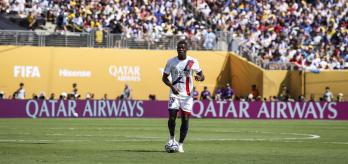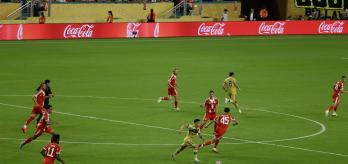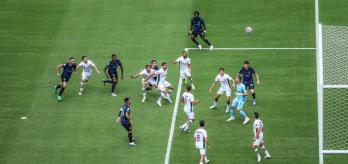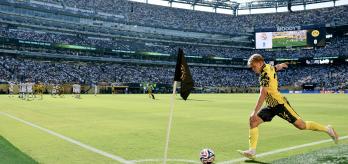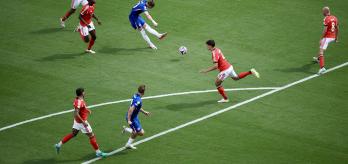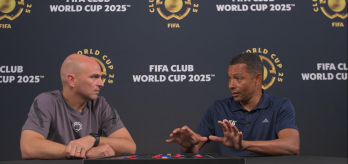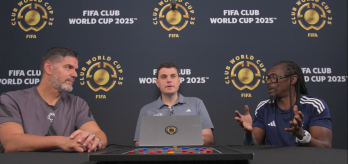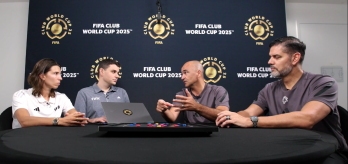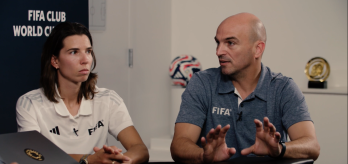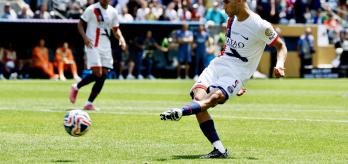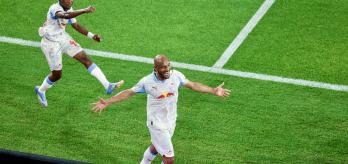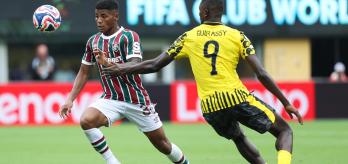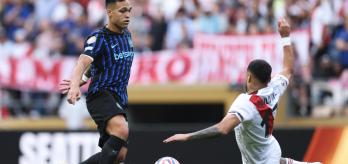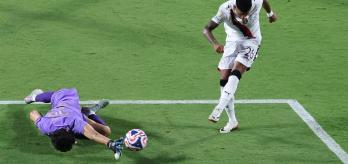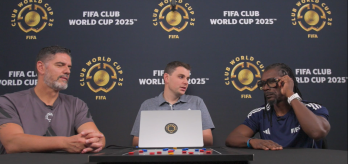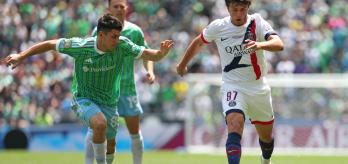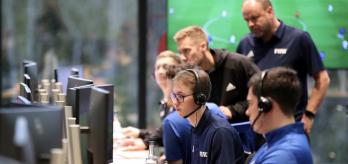In this roundtable discussion, Aliou Cissé and Pascal Zuberbühler join Tom Gardner, Lead of FIFA’s Football Performance Insights Team, to analyse how different teams have looked to build out from the back against high-pressing opponents. The TSG members have been drawn particularly to ways that certain clubs have utilised their goalkeepers as an integral part of the build-up phase, turning them into a vital extra player when faced with an aggressive press.
Watch roundtable
Read summary
00:54
Using the keeper to draw in the press
Every team that has dominated games throughout the tournament has brought a high-intensity style both in and out of possession. The group explains that there are three ways of bypassing such a rigorous pressing system: by dribbling, playing long, or using the width of the pitch. Cissé observes that opponents who attempted to play more direct against a high-pressing, dominant team had greater success than those who attempted to build from the back. When teams did build out, goalkeepers were vastly important as they act as the extra player, and also play a key role in drawing in the opposition press. Therefore, the keeper plays a key role in drawing in the opposition’s press. By holding onto the ball just long enough to invite pressure, the goalkeeper can manipulate the positioning of the opposing team, opening up lanes of progression further up the pitch to play into with direct passes.
04:19
Winning first and second balls
If the long ball from the keeper is executed well, it can lead to a team regaining possession from the first or second balls in advanced areas. Zuberbühler and Cissé highlight an example of SL Benfica playing long to bypass FC Bayern München’s high press during a win over the German champions in the group phase. The Portuguese side invited Bayern to press before playing long to the forward line, and managed to win both the first and second balls. From there, they played wide, using the width of the pitch to take advantage of Bayern’s lack of numbers at the back, having committed several bodies to the high press. The experts praised Benfica’s strategy in this game, having recognised Bayern’s threat when pressing and opting to play direct balls instead of leaning into the Bundesliga club’s strengths by passing out from the back and allowing them to force a turnover in a dangerous area.
06:10
Switching up the approach in-game
The group pondered over an interesting question of whether a team can switch their style of play mid-match, using Ulsan HD’s game against Borussia Dortmund as an example of this proving successful. Ulsan HD were instructed in the first half to build patiently from the back, but this approach led their opponents to win 10 turnovers in the opening 45 minutes. Heading into half-time, the K League 1 club found themselves 1-0 down, but came out after the interval with a completely different approach, as Cissé explains, “To keep build-up play to a minimum and hit the ball long.” In turn, this caused Borussia Dortmund a lot more problems in the second half and allowed Ulsan HD to have greater success in the final third. The experts agreed that being able to adapt in this way is crucial when facing teams that press aggressively, as it prevents predictability and keeps opponents off balance. Ultimately, adopting a more direct style mid-game can be an effective solution to overcoming sustained pressure and gaining control in key moments.







